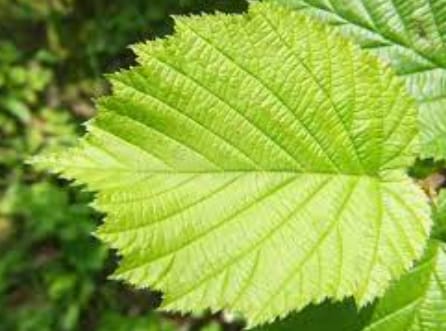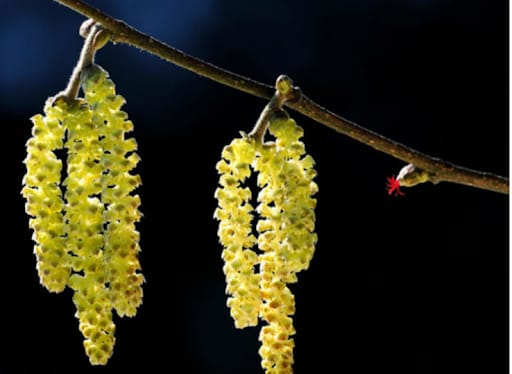- Rosamund Community Garden
- Posts
- Rosamund Community Garden Update October 2025
Rosamund Community Garden Update October 2025
a wildlife garden for the community in Guildford, Longdown Road, GU4 8PP
Hello and welcome to October’s garden update.
📅UPCOMING EVENTS AT THE GARDEN
Thursday, 16th October - AQA corporate volunteers (closed group)
🍂Sunday, 19th October - 1.:00 pm-2:30 pm Family Nature Connection session with Jane, a perfect event for families to slow down, explore, and enjoy meaningful time together outdoors » TICKETS
🎄Sunday, 7th December, 10:30 am-12:30 pm -Wreath Making Workshop with Clare and Helen - get into the holiday spirit and create your own beautiful wreath to decorate your home. This in-person workshop will be held at the garden » TICKETS
🌍EVENTS AT ZERO GUILDFORD » CLICK
🍎WHAT A DAY!
Highlights from Our Apple Pressing & Open Day

This year’s phenomenal crop of apples, together with the warm sunshine on the day, meant a brilliant turnout for our popular open day.
Volunteers went above and beyond, baking delicious cakes, preparing hearty soups, and keeping the stalls and apple press running smoothly.

Erin and Lisa
We had a record number of visitors, reflected in the takings (almost double compared to last year!). Mary Tobin from Mary Makes Jam sold out of her produce, as did all the food and juice.
She generously donated half her takings to the garden and half to a local women’s shelter.

Charlotte from Earthlings Outdoor Learning (pictured on the left below) provided a peaceful space for the younger children to play and create away from the hubbub.

Both our presses were flat out all day, producing bottle after bottle of juice. Mark at the bottling station did a fantastic job keeping up with demand.

Thanks to all the lovely people who made this a very special day.
Cheers!

What Happened Next…
We like to make the most of our presses, so this year we lent one to the first Shalford Orchard Apple Day and we also hosted the Camberley Nepalese group for a fun-filled extra pressing.

And the sixth-formers from RGS and GHS enjoyed processing the last of the windfalls during their volunteer shift.

Kate caught her chickens that she brought up for the day to clear the fruit cage.

And local pigs have tucked into the apple chips.

More pics and pigs from “Apple Pressing & Open Afternoon” over on our Instagram and/or Facebook page.
🌱GARDEN NEWS
by Clare Millington
It’s starting to feel really autumnal now, and the late warm weather and soft rains have given the garden a boost, producing some gorgeous blooms for the pollinators. The sedums, sunflowers, geraniums, and cosmos are particularly striking.

We still have a decent amount of apples and pears in the orchard, and the dye bed just keeps on flowering! We’re definitely going to thread the coreopsis and dyer’s chamomile through the other beds next summer, they are just incredible.

In the polytunnel, the winter salads are very well established and, with this continued warmth, we’ll be getting small harvests before the days get too short. There will hopefully be bumper amounts in the spring.

This time of year we can take a step back, look at what we’ve learnt, and make plans for the winter. We are busy collecting and saving seed for planting or sharing, cutting back dead stalks, and clearing, weeding, and covering the beds.
The perennial broccoli is ready to be planted into its final place. This variety ‘Nine Star’ produces huge yields and forms a large bush, so we’ll make a clump in the forest garden. It’ll need protecting from the birds over the winter, as they tend to strip the brassicas when food is scarce.
The raised beds have done well this year and are now ready to be cleared and topped up with manure and compost. Ann has planted green manures in one of them, and we can plant the broad beans once the others are clear.
Mike has started scything the orchard, so we’re using the cut grass to cover some of the beds. This worked well last year and kept the weeds down until we plant again in the spring.

John Draper, one of the spoon carvers, has donated a lovely piece of stained glass for the window in the Hub. It’s great to have some colour there, especially on grey, wintry days. John also made our much-admired wooden sign outside the Hub.

Thanks, John!
👩🏻🌾OCTOBER JOBS AT THE GARDEN
Collect, save and label dry seed on dry days
Cut down spent plants - clear beans, squash plants, asparagus etc
Harvest raspberries and apples and pears
Collect manure from next door
Cover empty beds with mulch and cardboard
Water salads and plants in poly-tunnels if dry
🌱PLANT OF THE MONTH - HAZEL
by Helen Harris

Scientific name: Corylus avellana
Habitat: Hazel is widespread in Northern regions of Europe and Western Asia. It thrives in hedgerows the dappled woodland shade, often present in ancient woodlands as part of the understorey alongside oaks and field maples.
Description: Hazel typically produces multiple stems at ground level, so technically is categorised as a shrub rather than a tree with a base area of up to 2m diameter and a dense low level understory. It is a short-lived tree, reaching 50-70 years in age, but if it is coppiced, either by people or naturally through damage to its trunks, it will live much longer (up to a few hundreds of years)
The bark is smooth and shiny, and greyish-brown in colour. The trunks often support a diverse range of mosses, liverworts and lichens some of which are very rare, especially in the wetter parts of its range*.
The leaves are roundish in shape, with a point at the end, and are about 10 cm across. Leaf edges are doubly serrate and the leaves are hairy with a rough texture.
Hazel is monoecious, meaning that both male and female flowers are found on the same tree. Male flowers are pale yellow catkins. They open in February, before the leaves unfurl so they are one of the first obvious signs of spring in the forest.

The female flowers are tiny red tufts, growing out of what look like swollen buds, and are visible on the same branches as the male catkins.
Ecology: Hazel is a member of the birch family of trees, Betulaceae
Hazel trees are important for biodiversity. Their dense foliage and the tangle of stems offer shelter for nesting birds, small mammals, and insects. Coppiced hazel also provides shelter for ground-nesting birds, such as the nightingale, nightjar, yellowhammer and willow warbler.
The nuts, commonly known as cobnuts or filberts, are a vital autumn food source for dormice, squirrels, woodpeckers, and jays. The catkins, which appear in late winter, are among the first sources of pollen for bees emerging from hibernation.
Hazel leaves provide food for the caterpillars of moths, including the large emerald, small white wave, barred umber and nut-tree tussock.
Folklore and Myth: Hazel is associated with wisdom, divination, and magic. In Celtic tradition, hazel was the tree of knowledge and inspiration. The legend of the Salmon of Knowledge tells of a magical fish that gained all the world’s wisdom by eating hazelnuts that fell into a sacred pool. Only those who ate the salmon could share in this wisdom.
Hazel rods have long been used as dowsing sticks to find water, minerals, or hidden treasures. The tree’s association with protection led to hazel being planted near homes to ward off evil spirits and lightning. In some regions, hazel nuts were carried as charms against rheumatism and for good luck.
Traditional uses: It is well adapted to coppicing, a traditional woodland management technique where the stems are cut at ground level to encourage growth of more, straight poles. These have a variety of uses, notably for the wattle panels in traditional wattle and daub building (and in our very own Hub) as well as hurdle fence panels and in basketry and charcoal production.
Archaeological evidence from pollen analysis has shown there was a rapid expansion in the range of hazel during the Mesolithic period (from 11,000 to 6,000 years ago). Because the large nuts are not dispersed over great distances, this has led to speculation that Mesolithic peoples may have transported the nuts with them as a food source, and thereby aided the expansion of the tree’s range.
Hazelnuts have been gathered for millenia and enjoyed as a nutritious food, eaten fresh, roasted, or ground into flour. Twigs were used in rural medicine, believed to treat ailments such as coughs and rheumatism.
* For this reason in wetter temperate rainforest areas of its range coppicing is not recommended.
Sources
For joining info please email [email protected]
We look forward to seeing you in the garden soon!
Reply